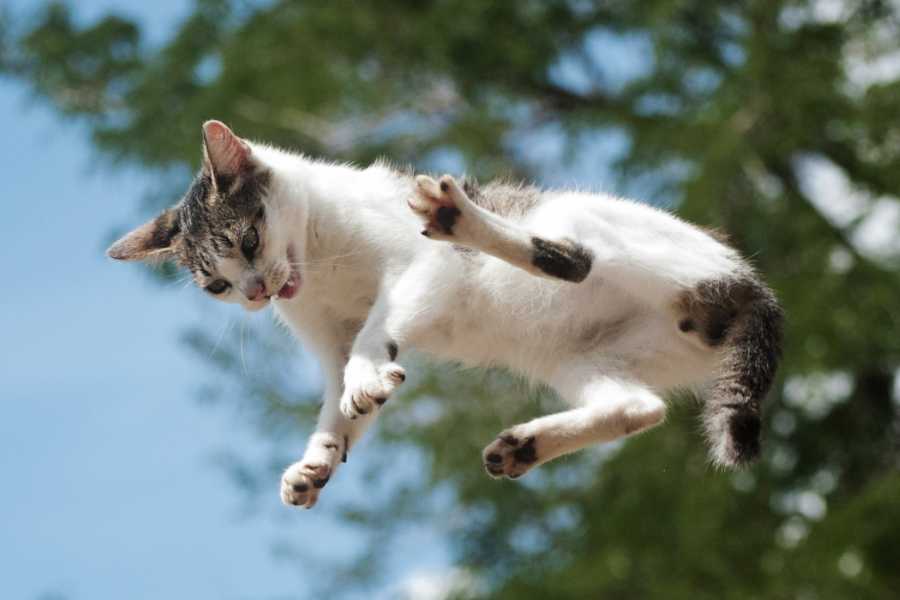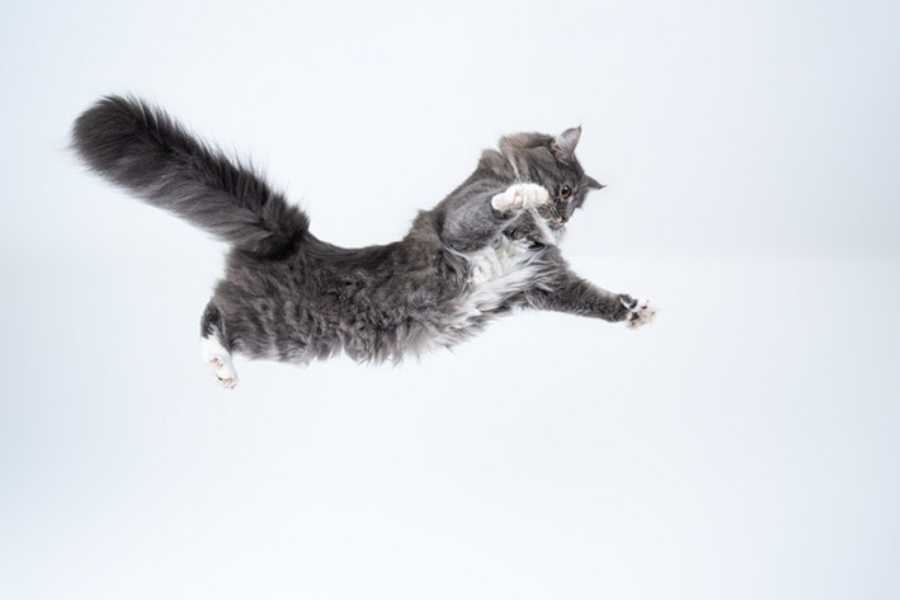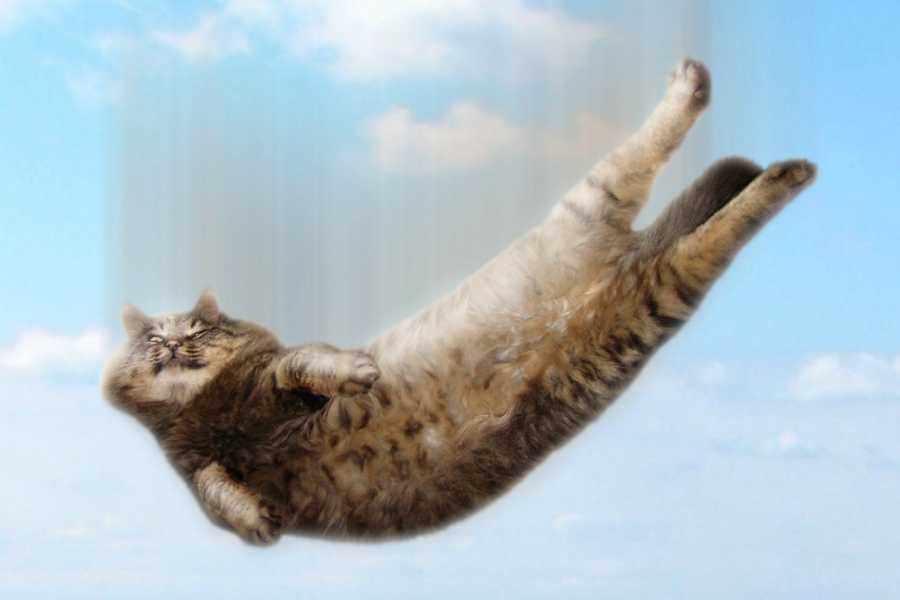How Can Cats Survive High Falls? Unraveling the Mystery

How Can Cats Survive High Falls?
One ordinary morning, a nurse named Brittney Kirk left her window slightly ajar to let in some fresh air. Unbeknownst to her, her curious cat decided to venture out the window and ended up taking a nineteen-story plunge. ![]()
But here’s the twist: the cat didn’t die. In fact, she survived with only a bruised chest.
This might leave you wondering, how did a cat manage to survive a 200-foot fall when most fifty-foot falls are lethal for humans? The answer lies in a fascinating mix of physics and biology. ![]()
The Physics Behind a Cat’s Fall 📚

The saying “a cat has nine lives” is believed to originate from a cat’s ability to seemingly always land on its feet and survive even the greatest of falls. But what’s the science behind this?
When an object falls, it keeps accelerating towards the ground until it reaches a point where the force of the air pushing up cancels out the force of gravity pulling it down. This point is known as the terminal velocity, and it’s the fastest an object can fall through the atmosphere. 🌍
The terminal velocity isn’t the same for everything. It’s proportional to the square root of mass over the downward-facing surface area. Generally speaking, the bigger the object, the higher its terminal velocity. For instance, a blue whale would max out falling through the sky at 3,000 meters per second, an African elephant at eighty meters per second, and a human at fifty-five. ![]()
But the average house cat, weighing only about eight pounds, comes in at only 26 meters per second. This means that after about six stories, a cat stops accelerating. So whether a cat falls off a six-story building or a 600-story building, there isn’t much of a difference. 🏢
The Biology of a Cat’s Fall 🧬

Apart from the physics, there’s also a biological reason behind cats’ mysterious abilities. Cats possess what’s called an aerial righting reflex. This reflex allows a cat to flip in the air without pushing off anything first, which seems to contradict the law of conservation of angular momentum. 🔄
When a cat falls, it arches its back, dividing its body into a front part and a back part. The two parts can work independently. Early in the rotation, the cat pulls its front legs in and leaves the back splayed out, allowing the front half to rotate quickly while the back half stays relatively still.
Then halfway through, it does the opposite, allowing the back half to rotate. By the time the cat is landing, all four legs are stretched out as far as they can be, which means slow rotation. The two halves are working in opposite ways, using the inertia of the cat’s own body weight to spin each side. ![]()
Because the two spins operate separately in opposing directions, they cancel each other out, so Newton’s law isn’t broken. 🍎
On long falls, cats also spread their legs out nearly perpendicular to the ground, creating a sort of parachute against their stomach, further slowing their descent. And when they land, cats’ legs, which are very springy and muscular, act as shock absorbers.
Their springy legs reduce the force on their bodies and help them avoid breaking any bones. 🦴
Cats and High Falls: The Research 📖

In 1987, a study was conducted with 132 cats who were brought to a New York City veterinary clinic after falling from high buildings. Astonishingly, 90% of the cats treated survived, and only 37% needed emergency treatment to keep them alive. Even though 10% didn’t survive, it is still remarkable that 119 cats in the study were able to return home. 🏡
The study found that cats have an aerial righting reflex, which means that when they fall, they naturally turn feet facing down. This is crucial because when a cat falls feet facing down, it can absorb the ground shock far better, resulting in fewer injuries.
Cats’ legs have multiple joints, so when they hit the ground with their feet, the force is dispersed more effectively when their legs bend. The legs are also longer and act as springs to decelerate more slowly, thus reducing the seriousness of the collision. ![]()
Furthermore, it is speculated that since cats spread their legs during freefall, they increase the surface area, which in return slows their descent by increasing the air resistance on their bodies.
Even with natural selection aiding cats on the freefall descent, a cat who survives a fall from high heights is still considered lucky. Nature might have prepared them for falls from tall trees, but falls from tall buildings are anything but natural. 🌳
Wrapping Up 🎯

So, a cat’s ability to survive high falls is a combination of physics and biology. It’s a fascinating testament to the adaptability and resilience of these creatures.
But remember, while it’s interesting to understand how cats can survive high falls, it’s essential to ensure our furry friends’ safety at all times. Always keep windows and balconies secure to prevent any accidental falls.
For more insights into the fascinating world of cats, check out our articles on why cats have watery eyes and why cats are the best pets. 🐾
Remember, at pawsadviser.com, we’re here to help you make the best decisions for your pets. Stay tuned for more pet-related information and advice!

Tags
Share
Table Of Contents
Related Posts
Quick Links

